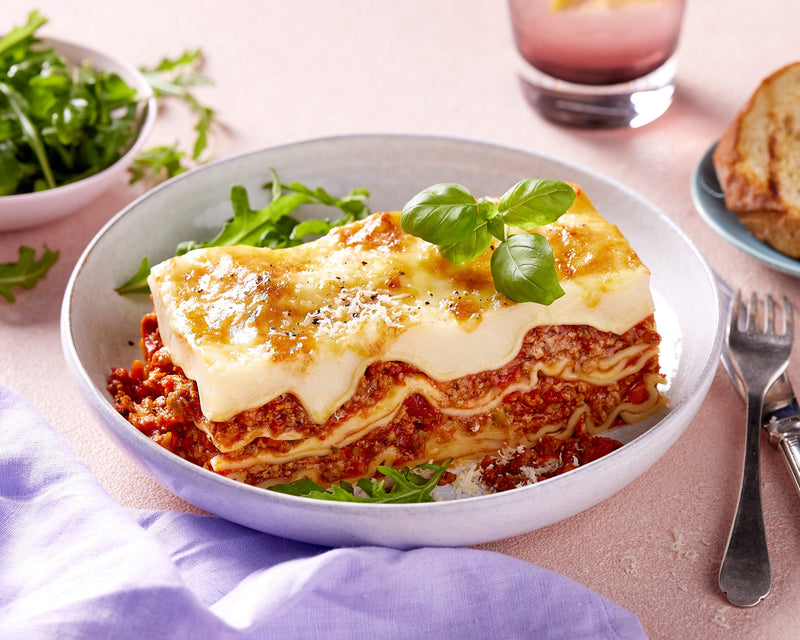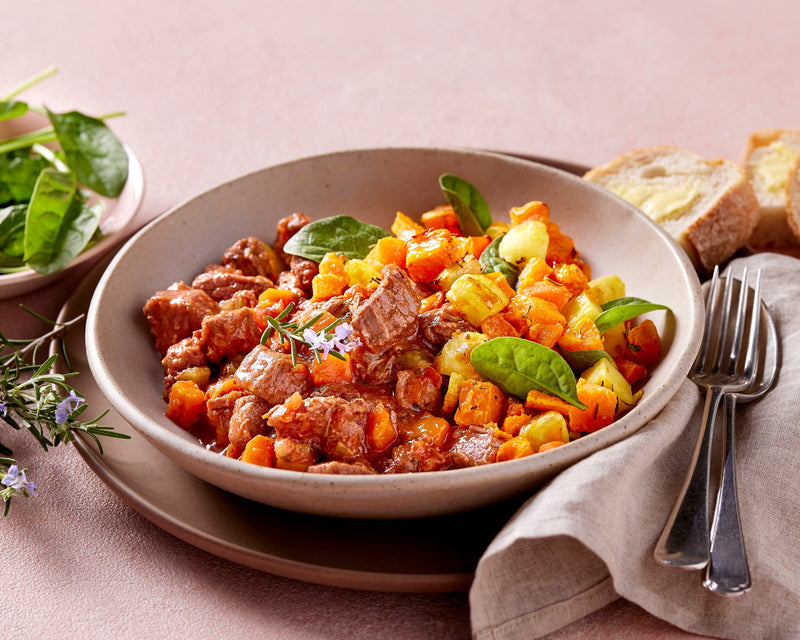Herbs. They’re colourful, flavour-packed, add freshness, and at Dineamic, we think they’re pretty damn awesome. Our love for these leafy additions goes beyond the flavour factor too, because from a nutrition perspective they do some great things for our bodies.
Some preliminary studies have shown that herbs may:
- Aid in the prevention and management of diabetes, heart disease, and cancer.
- Increase the availability and absorption of nutrients when combined in g. a salad dressing (1).
- Help reduce salt intake by adding flavour to meals rather than needing to add extra salt, which is beneficial as less salt means less risk of hypertension and chronic kidney disease.
Everyone has their favourite herbs, and those they avoid like the plague (looking at you- coriander), so here are the ones we love the most and why!
Basil
Often used in Mediterranean dishes and a staple in our pasta sauces, basil in addition to other herbs may explain some of the protective effects of the diet against heart disease and cancer (8). It has also been shown to have anti-microbial and anti-inflammatory properties through its high concentration of essential oils and phytochemicals throughout the leaves, stem, flower and seeds (9).
Parsley
We love adding chopped parsley to our salads for a flavour punch! Traditionally used as a diuretic, parsley has been shown to ease bloating and aid abdominal discomfort (10). It acts as a natural deodorizer and reduces bad breath through its anti-microbial properties (11) and has a high concentration of flavonoid antioxidants that helps fight oxidative stress and inflammation in the body.
Coriander
Also known as Cilantro or Chinese Parsley, you either love it or hate it, but we can't go without adding this flavoursome herb to our favourite Mexican meals! Studies even suggest it may be related to a gene that controls our sense of taste and reaction to pungent chemicals (2-4), in other words, you might be genetically predisposed to hate it. Nevertheless, coriander once traditionally used to relieve nausea, indigestion, gas, and bloating has also been shown to prevent oxidative damage (5), display antimicrobial properties (6) and have neurological benefits (7).
Storing Herbs
To maintain fresh and vibrant herbs, try placing them in a glass jar half filled with water in the fridge. This should keep them fresh for up to two weeks.
If you haven't gotten around to using your herbs in time, you can freeze them! Yep, that’s right, all herbs can be frozen. Give them a rough chop, put them in an ice cube tray then add in a little water before popping them in the freezer. Then just use them as you need.
Alternatively, you can dry your own, simply hang the bunch upside down in a warm area then transfer to an airtight container.
Fresh or Dried?
We’ve already spoken about freezing, but what about dried herbs? We’d hazard a guess that most people have a jar of dried mixed herbs in their pantry. But do you ever really wonder how good they are for you? The answer to that might surprise you!
Dried herbs are often processed immediately after harvesting so degradation of the herb is reduced keeping the polyphenols, flavonoids and antioxidants intact (basically, all the good stuff in them, stays good). Just make sure you’re using your dried herbs within a year for max flavour & nutritional value.
Dried herbs are great when added during cooking to infuse as they have a more concentrated flavour, but fresh is best as a garnish, in salads.
So that’s it! The quick word on herbs. We’re sure you love them as much as we do, but hopefully not that you know a little more you’ll up your intake of these power plants!
References
-
Ninfali P, Mea G, Giorgini S, et al. Antioxidant capacity of vegetables, spices and dressings relevant to nutrition. Br J Nutr 2005; 93: 257-266.
-
Hayes JE, Feeney EL, Allen AL. Do polymorphisms in chemosensory genes matter for human ingestive behavior? Food Qual Prefer. 2013;30:202–216.
-
Eriksson N, Wu S, Do C, et al. A genetic variant near olfactory receptor genes influences cilantro preference. Flavour. 2012;1:22–29.
-
Knaapila A, Hwang LD, Lysenko A, et al. Genetic analysis of chemosensory traits in human twins. Chem Senses. 2012;37:869–881.
-
Chitra V, Leelamma S. Coriandrum sativum changes the levels of lipid peroxides and activity of antioxidant enzymes in experimental animals. Ind J Biochem Biophys. 1999;36:59–61.
-
Hosseinzadeh H, Alaw Qotbi AA, Seidavi A, Norris D, Brown D. Effects of different levels of coriander (Coriandrum sativum) seed powder and extract on serum biochemical parameters, microbiota, and immunity in broiler chicks. Sci World J. 2014;2014:628979.
-
Höferl M, Krist S, Buchbauer G. Chirality influences the effects of linalool on physiological parameters of stress. Plant Med. 2006;72:1188–1192.
-
Keys A. Seven countries: a multivariate analysis of death and coronary heart disease. Cambridge, Mass: Harvard University Press, 1980.
-
Dasgupta T, Rao AR, Yadava PK. Chemomodulatory efficacy of basil leaf (Ocimum basilicum) on drug-metabolizing and antioxidant enzymes, and on carcinogen-induced skin and forestomach papillomagenesis. Phyto-medicine 2004; 11: 139-15
-
Kreydiyyeh SI1, Usta J. Diuretic effect and mechanism of action of parsley. J Ethnopharmacol. 2002 Mar;79(3):353-7.
-
Lodhia P1, Yaegaki K, Khakbaznejad A, Imai T, Sato T, Tanaka T, Murata T, Kamoda T. Effect of green tea on volatile sulfur compounds in mouth air. J Nutr Sci Vitaminol (Tokyo) 2008 Feb;54(1): 89-94.









